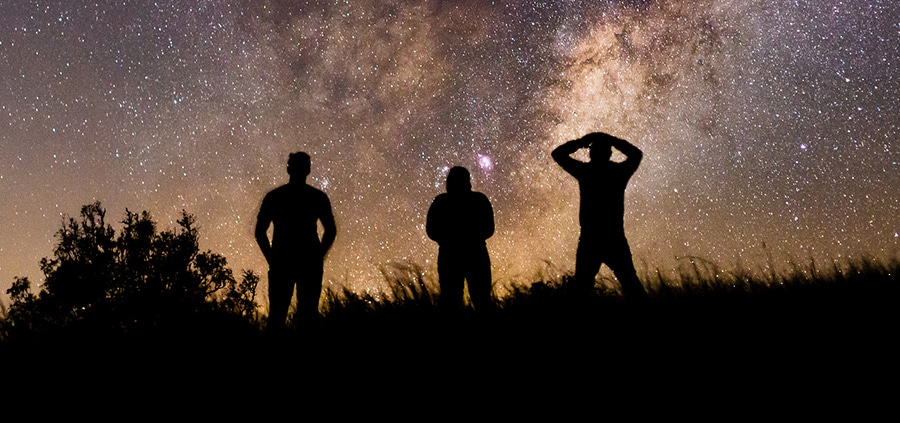Summer Star Gazing
The only thing better than a day on the river is finishing that day off with a summer star gazing session. Stars have captured humankind’s imagination, folklore, scientific studies, navigation techniques and pages of history since the dawn of time. Maybe this is because stars help us to reflect and ponder our lives. Perhaps it is because they cause us to wonder about life beyond our planet. Whatever the reason may be, stargazing, and especially stargazing in the summer, is a profound and satisfying experience.
Summer constellations in the northern hemisphere are best between June through September. They are also best when you are away from city lights, smoke and pollution. We suggest planning a camping trip or finding an open clearing away from large groups of buildings and people to get a clear view of the sky.
Now, there are hundreds and thousands of stars, asterisms (an asterism is a grouping of stars that is smaller than a constellation) and constellations in the sky.
Draco

Illustration of Draco and Ursa Minor
Draco can be seen in the evening. It has three stars that are brighter than a magnitude 3, the brightest is Eltanin. The Draco constellation is home to the Cat’s Eye Nebula and four galaxies.
Ursa Major and Minor

Ursa Major
First, Ursa Major, meaning “the great bear”, is easy to find as it is the third largest constellation in the sky and it’s brightest stars make up the Big Dipper asterism. Ursa Major has deep roots in history dating back to Ptolemy, Homer and the Ancient Greeks.
Next, Ursa Minor, meaning “the smaller bear”, is associated with the Little Dipper asterism. Contained in Ursa Minor’s group of stars is Polaris, the North Star, which sits at the tip of the dipper’s handle.
Hercules

Hercules
If you have found Draco, Hercules is easy to find as he stands victoriously on Draco’s head. Hercules lies in the third quadrant of the northern hemisphere and can be picked out by it’s central asterism- the Keystone. Disney lovers are familiar with a version of the ancient Greek and Roman legend of the immortal hero Hercules.
Scorpius and Sagittarius

Scorpius
All you zodiac fanatics out there will enjoy searching for Scorpius and Sagittarius in the summer months. These two constellations are normally residents of the southern hemisphere, but they rise over the southern horizon during the summer months.
Scorpius contains two of the brightest stars in the sky, Antares and Shaula, the former marking the center of the scorpion’s heart and the latter marking the tip of its tail.
Corona Borealis

Corona Borealis
In Latin, Corona Borealis means “the northern crown”, looks like a smile, and can be found near the Hercules constellation. Corona Borealis is associated with the myth of Princess Ariadne of Crete, who married the god Dionysus. The circlet of stars in the constellation Corona Borealis represents the crown made by the god Hephaestus that she wore on her wedding day.
We hope this short list inspires you to dig into some amazing astronomy and learn more about the night sky. Getting out under the stars and enjoying time with family and friends, or just taking some time to self-reflect can do wonders for your emotional and mental well-being. If you are feeling extra adventurous, you can try your hand at moon gazing too! Let us know in the comments below what other constellations you find during your summer stargazing.
Book your Ocoee River Whitewater Rafting trip here!




Leave a Reply
Want to join the discussion?Feel free to contribute!